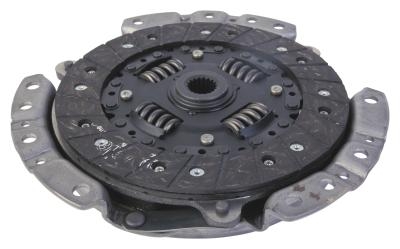
The 1995 Ford F150 comes standard with a 145-horsepower, 4.6-liter inline six-cylinder engine. The '95 F150 also comes standard with a five-speed manual transmission. This transmission makes use of a hydraulic system to engage and disengage the clutch. This system replaced the old cable-controlled clutch system that had many different linkages and cables that needed adjustment. This clutch system consists of four main components: the clutch pedal, master cylinder, slave cylinder and hydraulic lines.
The clutch pedal is the most mechanical component in the hydraulic clutch system. This pedal is connected to a mount behind the dashboard that allows it to pivot. When the pedal is pressed, it pushes a plunger inside the clutch master cylinder, which begins the process of disengaging the clutch.
The clutch master cylinder is the component that stores all of the DOT3 fluid needed for the hydraulic system. It also connects directly to the clutch pedal and creates the pressure needed to engage and disengage the clutch. The clutch master cylinder sits directly next to the brake master cylinder and looks like a smaller version of the brake master cylinder.
The hydraulic lines link the master cylinder to the slave cylinder and back. These lines look very similar to hard brake lines. They are made of metal and have the bends needed to clear all of the other components in the vehicle.
The clutch slave cylinder is mounted inside the transmission's bell housing. The master cylinder sends the needed hydraulic pressure to the slave cylinder and the slave cylinder pushes the clutch fork. On some diesel versions of the F150, the clutch slave cylinder is externally mounted, but it performs the same function.
Cable-driven clutch systems would wear out over time and require adjustments. The hydraulic system does not require any type of adjustment. However, you may notice a symptom similar to a cable with excessive slack, such as a slipping clutch. This problem is typically rectified by bleeding the air from the hydraulic system. The bleeder valve for this system is located on the transmission's bell housing.